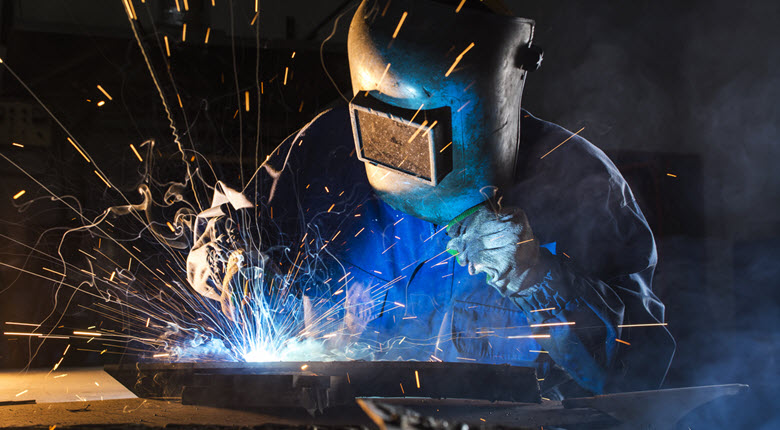Welding is an age-old tradition used by artisans to join materials together. This arguably formed the backbone for mechanical development in the early ages. Welding involves using heat, friction, and pressure to combine materials like metals or plastics.
Wielding has evolved over the years to become more efficient. For example, early Egyptians used charcoal to generate heat for welding, while in India, iron from meteorites was commonly used in welding.
Fast forward to the present day, and you can see how far modern welding has come. Most welders now have various welding options ranging from gas welding to electrical and even robotic welding. Keep reading as we look at some of the advantages gas welding has over electrical welding, but first, let’s start by understanding the terms gas welding and electrical welding.
What is gas welding?
Gas welding is a form of welding that uses oxygen and fuel gas (acetylene, hydrogen, propane) to join or cut metals. Its components include:
- oxygen cylinder
- fuel cylinder
- pressure regulator
- welding torch
- control valve
- mixer changer
In practice, the metal part that needs to be joined is heated under intense flame generated either through the mixture of oxygen and hydrogen, air and acetylene, oxygen and acetylene, or oxygen and propane. The most effective of this combination (oxygen and acetylene) is capable of generating temperatures as high as 3200°C which is enough to melt metals for subsequent solidification.
What is electrical welding?
Electric welding or arc welding involves using an electric arc to generate enough heat to join metals together. With the help of an electric arc (whether from direct current or alternating current), arc welders can quickly melt base metal at temperatures as high as 6500°F to create molten metal that joins metals.
A protective shielding gas, slag, or vapor is needed to prevent this weld from weakening due to oxides and nitrides, which are created as the metal chemically reacts to oxygen or nitrogen in the air.
Similarities of Gas Welding and Electrical Welding
- Both welding processes generate heat externally from atmospheric components (oxygen).
- The general rule of fusion welding applies to both gas and electrical welding, including melting faying surfaces and base metal areas to form coalescence.
Differences between Gas welding and Electrical welding
Below are some differences between gas welding and electrical welding:
- Electrical welding generates heat from electric current (AC/DC), while gas welding uses fuel gases ( hydrogen/acetylene).
- Temperature can reach up to 6000 °C with electric welding compared to 3500 °C in gas welding.
- Electric welding is restricted to electrically conductive metals and cannot be applied to conductive metals. Gas welding can be used for both electrically conductive and non-conductive metals.
- Gas requires a constant fuel gas/ oxygen supply for the welding process. Electric welding requires a continuous electric power supply.
- Unlike arc welding, gas welding is not suitable for thicker components but can be used on thin plates and metals.
- A protective shield is needed when arc welding. Gas welders need no such shield.
- The metal fusion process is faster in electrical welding than in gas welding due to its higher heat level.
- Compared to electrical welding, gas welding is more suitable for cutting, cleaning, and soldering.
Advantages of Gas Welding Over Electrical Welding
Depending on the situation, you may consider employing a gas welding process over electrical welding. For instance, gas welding tools are quite portable and can be easily transported-all you need is a fuel cylinder. The absence of the need for a continuous electrical supply during the gas welding process adds to its appeal among welders. Also, gas welding creates an avenue for flexibility. Welders can use this gas welding process for joining, cutting, cleaning, and soldering different components, electrically conductive or not.
Other advantages include:
- quicker welds with less heat and time
- no sparks or hot metal entrapment
- reduced odor and fumes
- no need for a shielding gas
- faster and easier joining of dissimilar metals
Finally, this welding process is easy to learn and requires less technical specialty than electrical arc welding.
Laserworx Welding Services for Your Next Project
If you’re looking for a reliable  and affordable welding company to help with your small-scale or industrial-scale welding, Laserworx is a perfect choice! At Laserwork, we have over twenty years of experience delivering high-quality welding services to our customers in Oxnard, CA, and Ventura County.
and affordable welding company to help with your small-scale or industrial-scale welding, Laserworx is a perfect choice! At Laserwork, we have over twenty years of experience delivering high-quality welding services to our customers in Oxnard, CA, and Ventura County.
Our experts are well-trained in various welding processes with one clear objective in mind: to deliver premium welding services that satisfy our customer’s goals! Contact us today, and let’s get started on your next project.



